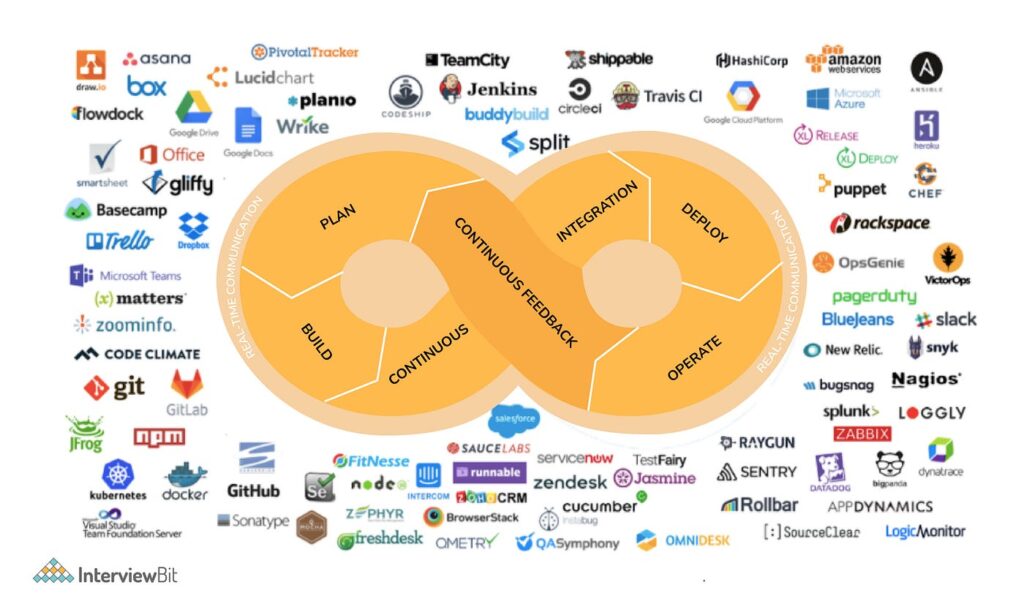What’s a tech stack?
Why do tech stacks matter?
Why do tech stacks of other companies matter?
Let’s take a look at Python, for example. It is an interpreted, high-level language that, according to its common description, is used for general-purpose programming. It’s true to an extent: you can, in theory, code anything you want with it. You can use Python to develop a Data Science app, a Web scraping tool, AI, or IoT products. It would be much harder to develop a web page’s front-end or a mobile app using Python.
If you try to use Python to develop things it’s not designed for, you will be spending more time, doing excessive reworks, and investing heavily in third-party tools. The entire development process will become problematic for the team and the investors.
Opening a wine bottle with a fork is possible, but why bother when there’s a perfectly good corkscrew around?
This is exactly why many businesses spy on the market’s most successful products to see what fitting solutions those have found.
Uber tech stack
Infrastructure and data storage are probably among the most vital elements of Uber’s application as there’s a huge need to work with maps, vehicles, and users on a per-location basis. The company chooses a hybrid cloud model that relies on a multitude of service providers, tools, and backup servers which get swapped out if and when the need arises.
Docker and Mesos are used to run and scale the hundreds of microservices that the tech giant’s app relies on. There’s also a custom-built library of builds that’s been converted into Docker images.
Originally kicking things at the lower levels with Python and Node.JS, Uber has expanded to Java and Go for their higher performance and open-source ecosystem. Also, Go’s native asynchronous programming gives the team a better grasp over the Python-based microservices once they are broken down.
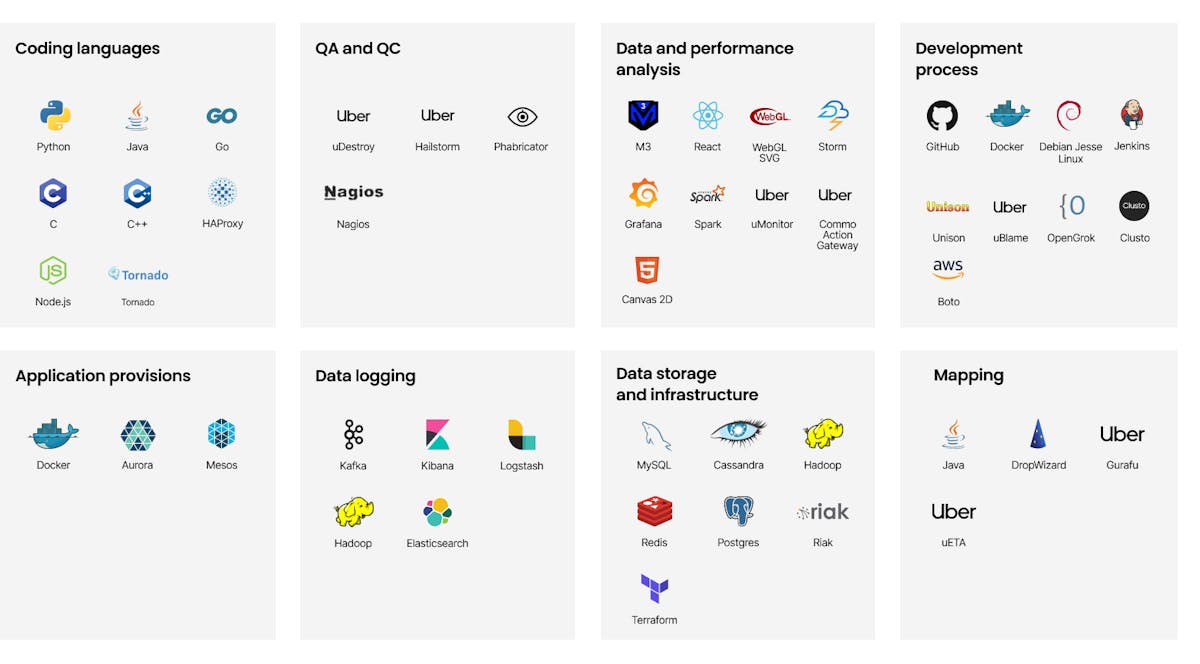
Lyft tech stack
In terms of the architecture, Lyft and Uber are similar, too: both aggregators are built using scalable microservices. The choice of Python, Java, and Go seems obvious.
Lyft is heavily relying on various cloud and data storage solutions. But none are set in stone: the company only uses third-party services as long as those are cheaper than in-house storage and servers.
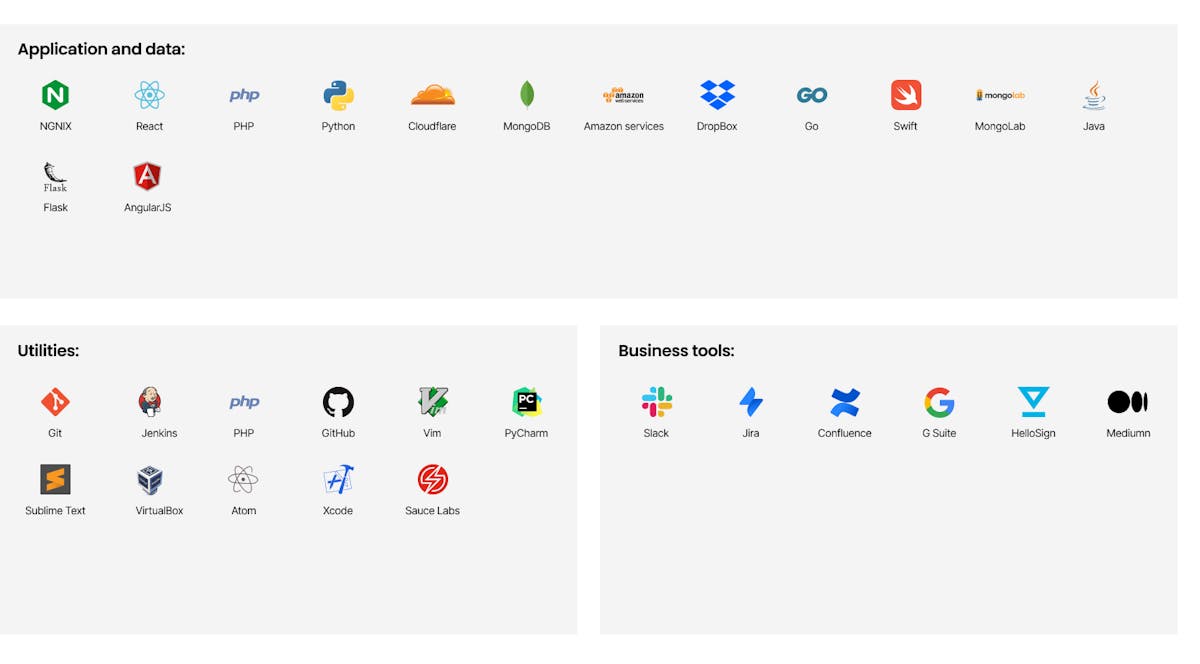
The entire application is built around a sophisticated, AI-powered algorithm that finds relevant rooms and accommodation according to a user’s requirements. The app considers countless factors: for example, ratings, experience, and proximity to eateries or public transportation joints.
The recent COVID pandemic has made travel much harder for everyone, but Airbnb is more than ready to handle the increased load when the travel limitations are gone. The reason is that it’s not a cloud-based application, so they are ready to scale whenever there’s a rise in demand.
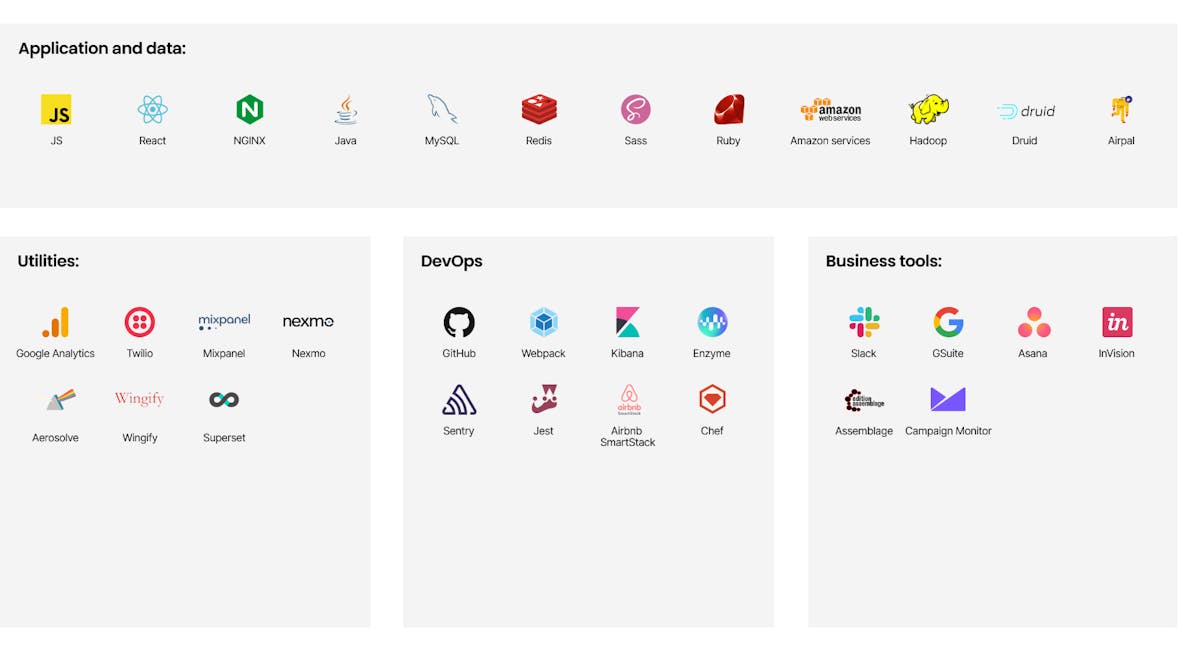
The Netflix app is based on multiple programming languages: Python, Node.JS, Java, Kotlin, and Swift. This is done to ensure all-round compatibility of the Netflix app across multiple platforms: browsers, smart TVs, smartphones, and gaming consoles.
The comprehensive library part of the stack is designed to offer users the most polished experience they’ve grown to expect from a streaming service. Netflix owes its user-friendly interface to React and JS UI libraries.
Given the app’s heavy emphasis on cloud-based solutions, the team behind the streaming giant has opted to use Dynomite as the database cluster management service. It offers several exceptional advantages: for example, support for in-memory, pluggable, and persistent storage engines.
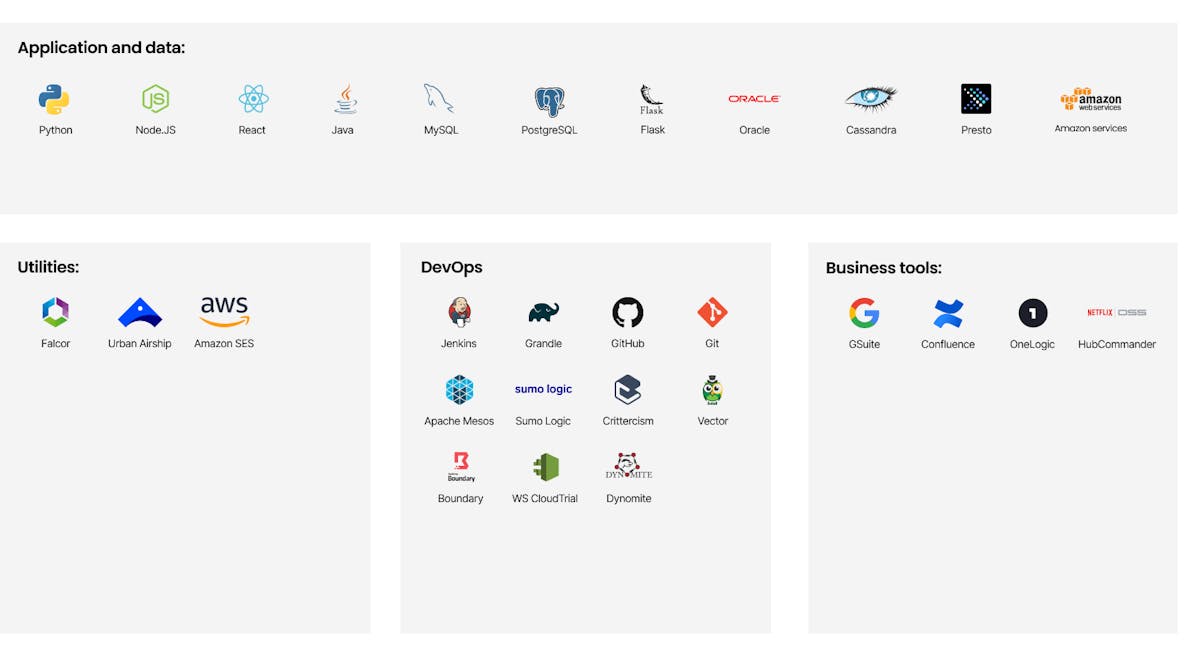
The primary focus, as with all large-scale projects that support thousands of users in real time, is scalability. Then comes usability on a multitude of platforms, including web browsers and native mobile applications. And, of course, data storage and security are pivotal, given the number of contacts and deals users store in their Salesforce accounts.
Also, Salesforce features custom-built analytics tools and complex search and analysis algorithms.
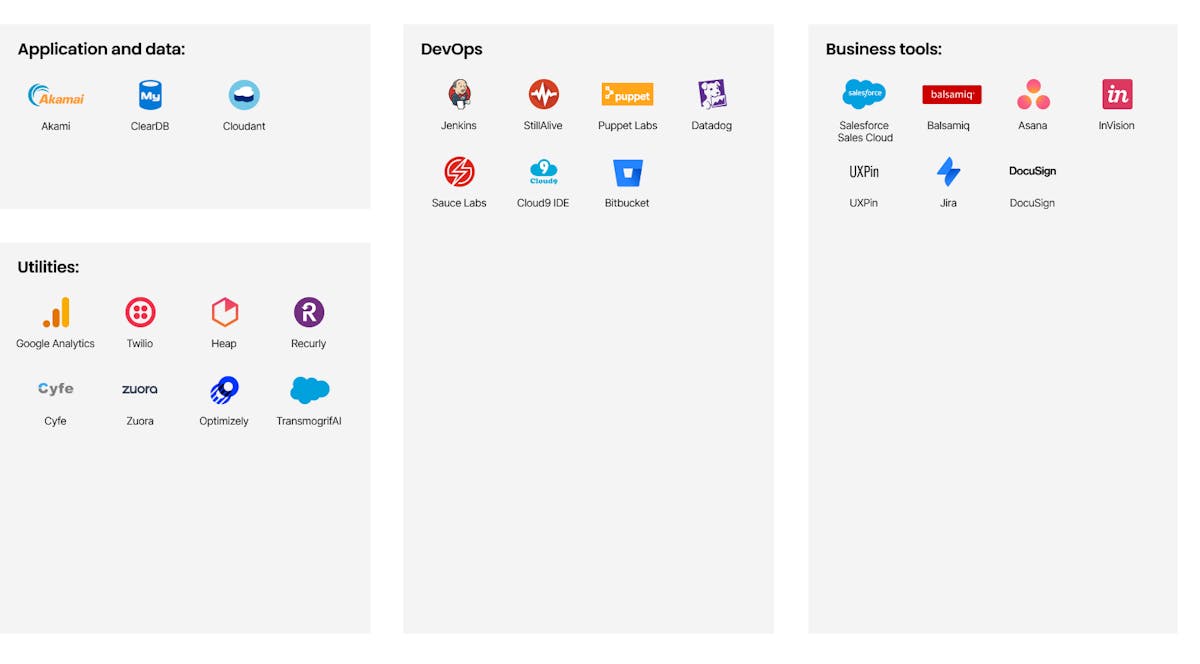
But there’s much more to Spotify. Pivotal to the music streaming giant’s success is its functionality of music discovery based on complex algorithms of preference and behavior analysis.
Spotify’s tech stack focuses on three primary challenges:
- Uninterrupted streaming: Multiple servers in different locations
- Data storage: Own cloud-based architecture, Hub framework, Google Cloud, Docker, Apache Storm
- AI-based recommendations: Python
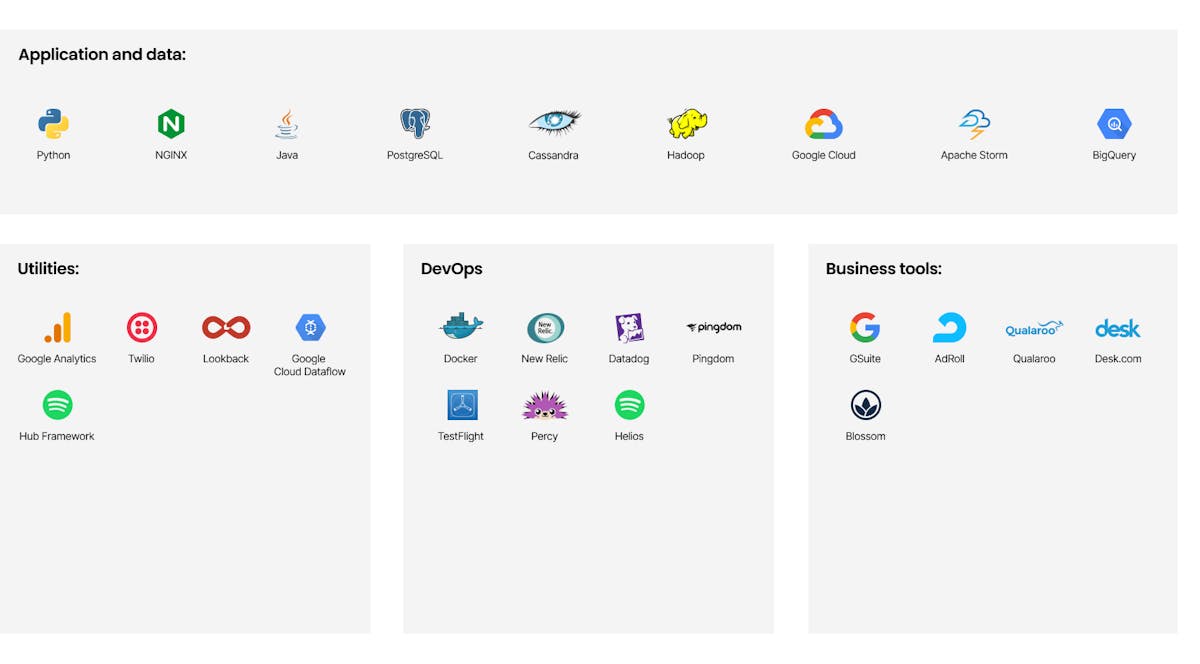
source: https://maddevs.io/blog/tech-stack-of-prominent-companies/

